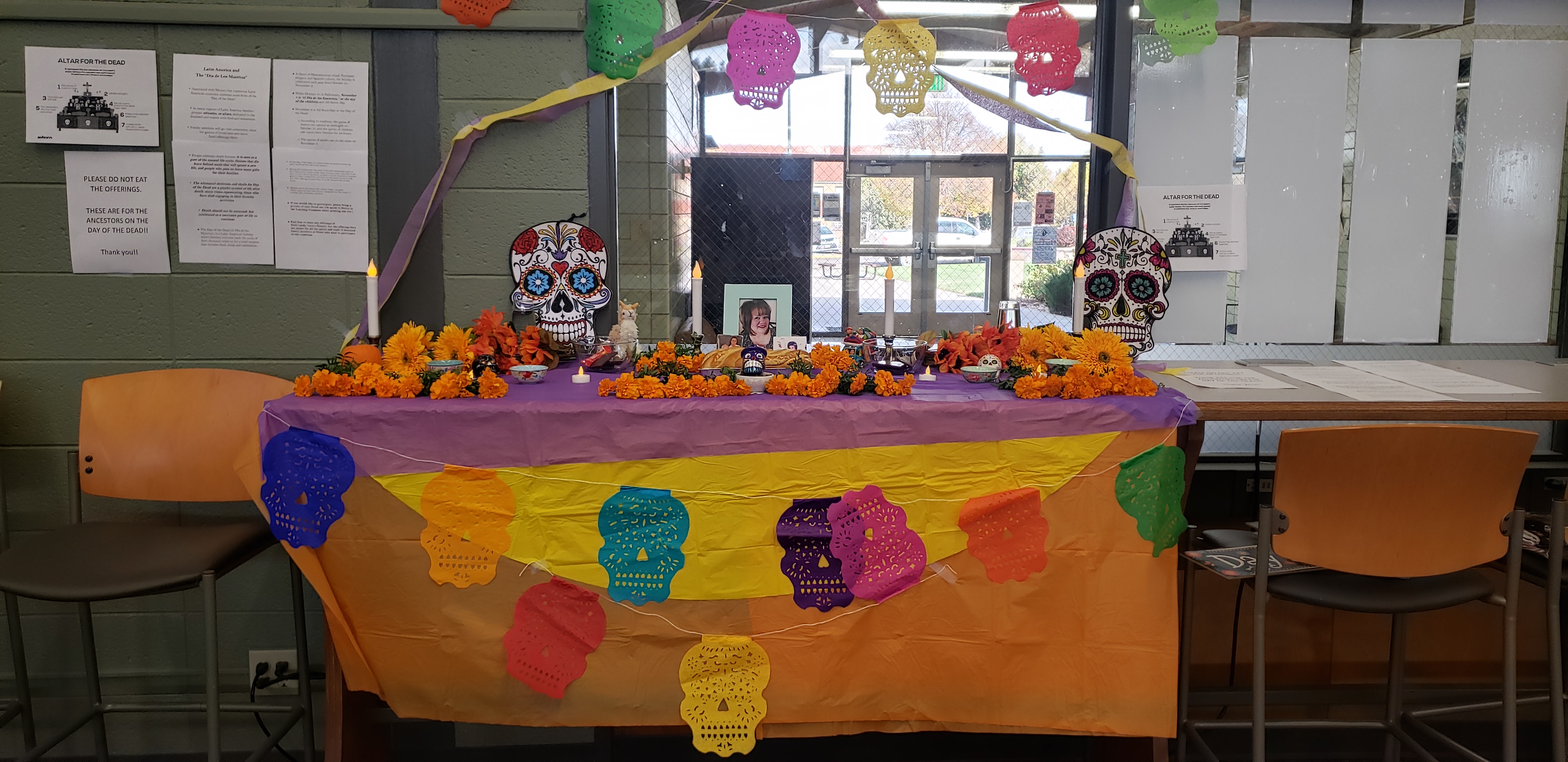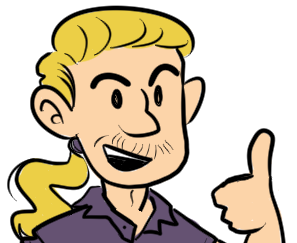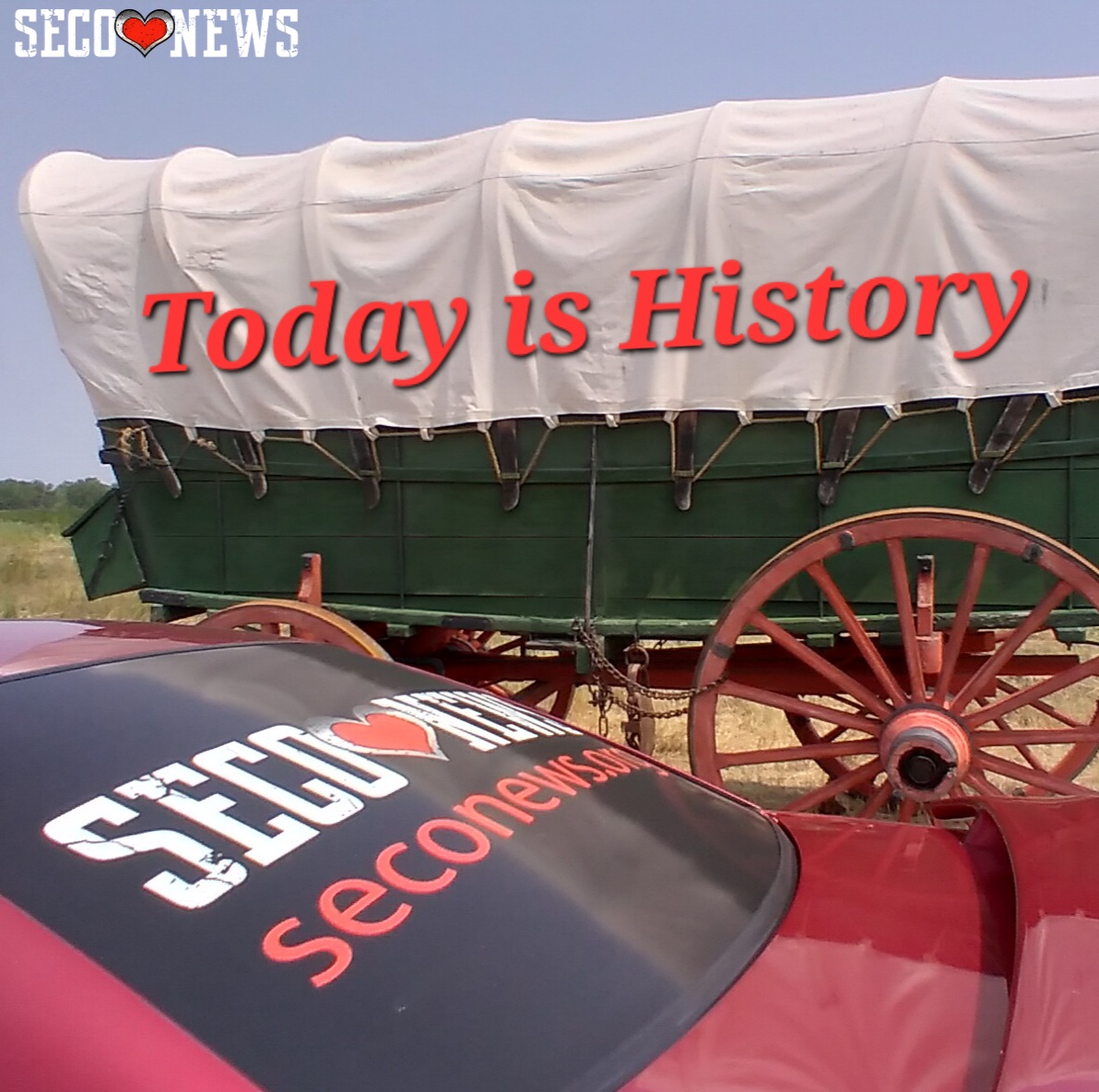Día de Los Muertos Altar Set up at Otero College

Description: Campus community members are invited to utilize this altar in remembrance of their loved ones - supplies are even provided on site.

Día de Los Muertos Altar Set up at Otero College
FOR IMMEDIATE RELEASE ..............................
LAJUNTA — This year, members of the AIM team and Learning Commons staff put together an Altar for the Day of the Dead, or Día de los Muertos for the first time. Campus community members are invited to utilize this altar in remembrance of their loved ones; supplies are even provided on site.
Dr. Kimberly Munro, professional development lead for the AIM Grant, shared, “As a Hispanic Serving Institution, we thought that with almost 40% of our students identifying as having Hispanic, or Latin American descent, we wanted to provide our community of learners a place to feel their traditions and customs were welcome. As we were organizing activities centered around Halloween, we realized that not all countries or cultures celebrate Halloween but do recognize other traditions around this time of year.”
They realized that Otero students, especially those living in the residence halls, may not have a place or supplies to setup altars of their own, and they hoped that setting up a “community altar” in the Learning Commons would provide a space for all to feel welcome.
The Day of the Dead is often attributed to Mexico, and while that is the most popularized Country to celebrate this religious tradition (made popular through movies like Coco), many Central and South American countries celebrate in a form of ancestral worship around this time of year.
“For example, my family is Peruvian, and in Peru we spend time cleaning our loved one’s gravestones, bringing them food and alcohol, and spending the day in the cemetery dancing, playing music, telling stories, and feasting with the spirits of the dead who have come back during this time of year,” Munro said.
Some quick and common facts/customs associated with the Day of the Dead for those who don’t celebrate or know much about it are:
-
On the Day of the Dead, it’s believed that the border between the spirit world and the real-world dissolve.
-
During this brief period, the souls of the dead awaken and return to the living world to feast, drink, dance and play music with their loved ones. In turn, the living family members treat the deceased as honored guests in their celebrations and leave the deceased’s favorite foods and other offerings at gravesites or on the ofrendas built in their homes. At the Otero Community Altar in the Learning Commons, they have provided bread, salt, chocolate, some sugar, and a little bit of coffee.
-
Ofrendas can be decorated with candles, marigolds, and other flowers alongside the food. Thank you to Cedric Quintana for providing his home-grown Marigolds for the altar.
-
Salt is also provided for the altar, it is considered “the spice of life,” and something the spirits of the dead love to indulge in when returning to the world of the living.
-
The Day of the Dead (el Día de los Muertos), is a Latin American holiday where families welcome back the souls of their deceased relatives for a brief reunion that includes food, drink, and celebration.
-
A blend of Meso/South American ritual, European religion and Spanish culture, the holiday is celebrated each year from Oct. 31-Nov. 2.
-
Nov. 1 is often referred to as “el Dia de los Inocentes,” or the day that children and infant souls return, and All Saints Day.
-
Nov. 2 is All Souls Day or the Day of the Dead, associated with the souls of adults who have passed.
-
According to tradition, the gates of heaven are opened at midnight on Oct. 31
-
and the spirits of children can rejoin their families for 24 hours.
-
The elements of the altar represent the four elements: candles for fire, the flowing paper for wind, cups of water for water, and the food and bread for earth. An archway is also present to symbolize the portal the dead pass through from the underworld to the world of the living.
The staff at Otero hope that this can become a long-standing tradition, and that everyone who wants to and feels comfortable participating will join in bringing photos of their deceased loved ones and any treats or special objects they want to add to the altar as an ofrenda (or offering to the souls of the departed).
For any questions about the Día de los Muertos Altar, contact Dr. Kimberly Munro at 719-384-6878 or email, kimberly.munro@otero.edu.
Follow SECO News on Facebook.
Subscribe to the SECO News YouTube Channel.
Press releases Sponsor






.png)






.png)
.png)


.png)







